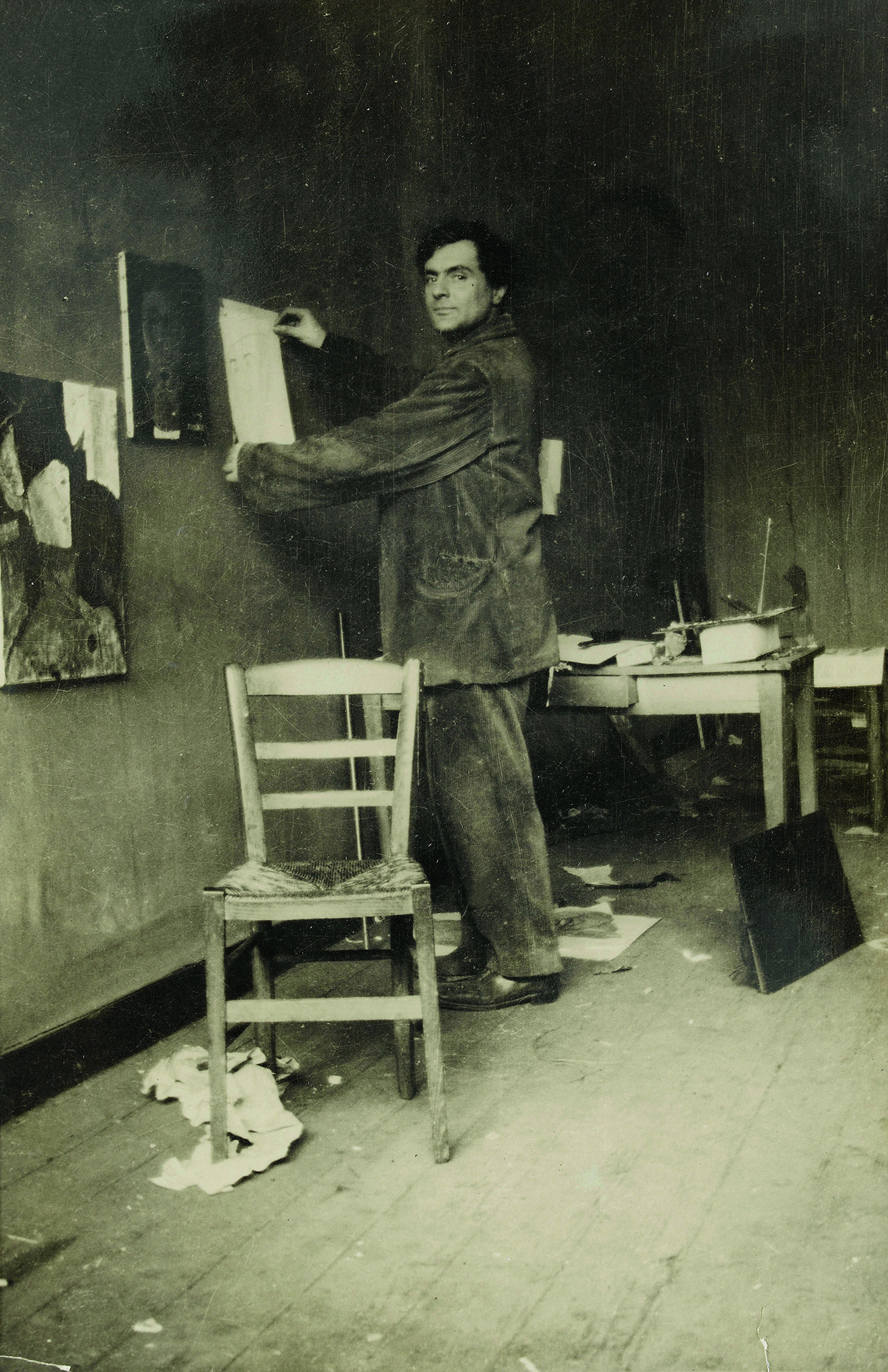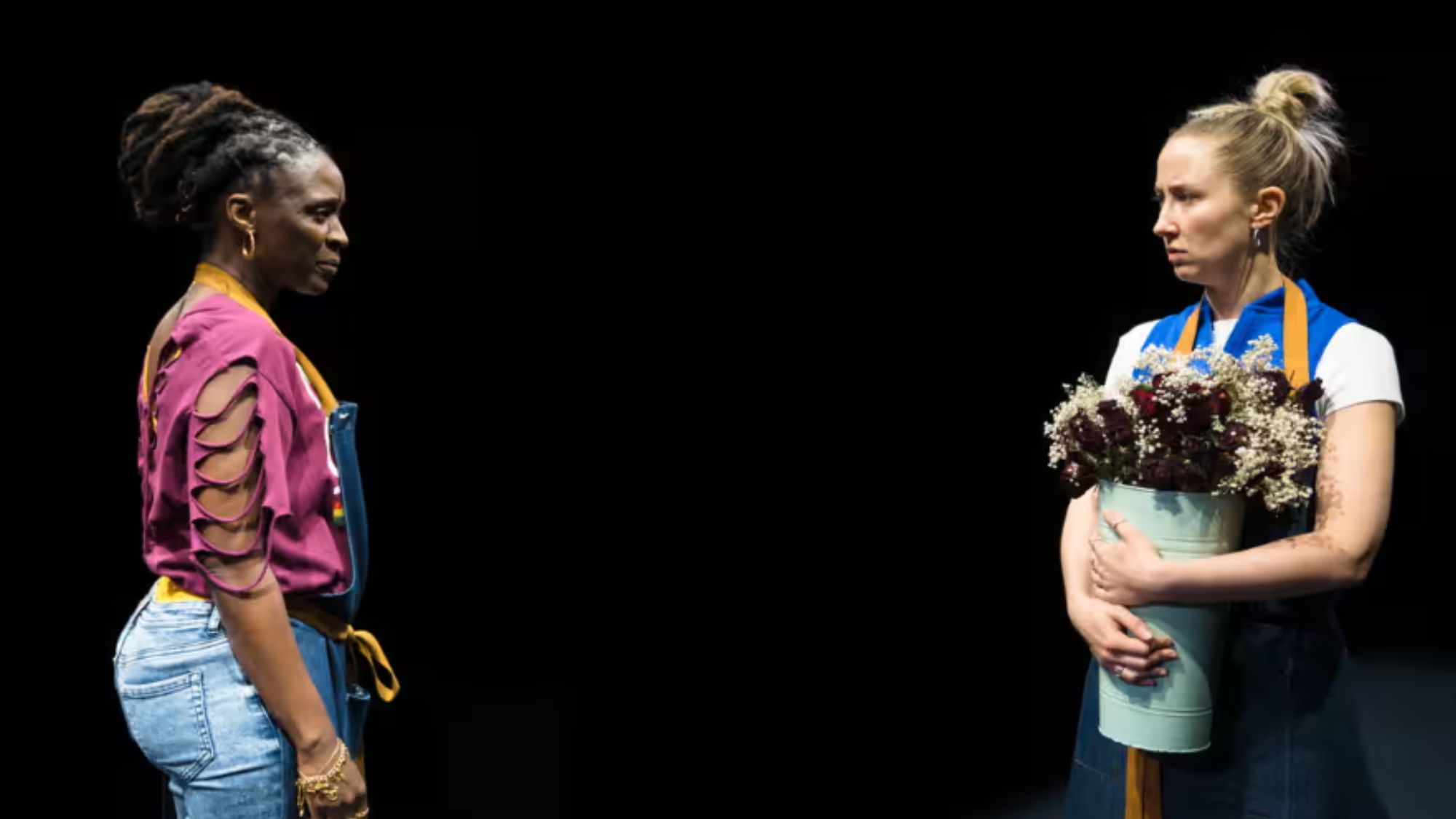Modigliani at Tate Modern
Assistant curator Emma Lewis on the Italian painter's life and how his story resonates through this new exhibition




Modigliani’s art has immediate and enduring appeal. But his relevance is also connected to the fact that his story still resonates today: a 21 year old who moves from the provinces in Italy to the capital of France, and suddenly finds he has the freedom to experiment, to absorb culture and new ideas, to meet diverse, interesting people from all over the world. He plays with his identity, and allows the city to shape who he becomes.
His story – and how it is reflected in his art, as he experiments with different styles (like cubism) or different media (like sculpture, a lesser-known but hugely important part of his practice), to ultimately find his own way – is the one that we tell in our exhibition.
Although he counted Picasso and Constantin Brancusi among his friends, Modigliani tended to look beyond his peer group for artistic inspiration. Henri de Toulouse-Lautrec and especially Paul Cezanne were important early influences. (Modigliani reputedly kept a reproduction of Cezanne’s 1889 painting Boy in a Red Waistcoat in his pocket.) He was influenced by displays of Cambodian, Egyptian and Ivorian art as well as artifacts that were becoming fashionable in Paris at the time.
The Week
Escape your echo chamber. Get the facts behind the news, plus analysis from multiple perspectives.

Sign up for The Week's Free Newsletters
From our morning news briefing to a weekly Good News Newsletter, get the best of The Week delivered directly to your inbox.
From our morning news briefing to a weekly Good News Newsletter, get the best of The Week delivered directly to your inbox.
Their influence is evident in his sculpture, and it is from here that he arrived at the most distinctive and immediately recognisable style that we see in his paintings: he elongated bodies into columns, reduced faces to an oval, and often painted eyes as blank almond shapes. Asked by the painter Lepold Survage why he painted him with one eye closed and the other open, he said: ‘because you look out at the world with one eye, and into yourself with the other.’
Modigliani’s nudes modernised figurative painting, but they also proved scandalous, due at least in part to the presence of pubic hair. Allegedly this impacted negatively on the only solo show of his work that he lived to see, an exhibition held in 1917, at the Galerie Berthe Weill in Paris. There, according to Weill’s memoirs, a painting spotted by the police commissioner who lived opposite caused sufficient fuss to scupper the whole enterprise. Shocked by the 'hairs', he forced Weill to take the paintings off the wall and the show was effectively brought to an end.
However, as the journalist Francis Carco surmised in the journal L’Eventail in 1919, such versions of events were exaggerated; the exhibition in fact continued to run and there were even a few buyers.
Evidently, Modigliani’s brief life left his biography open to speculation and myth. We can perhaps gain the best sense of who he was as a man from contemporary accounts by those closest to him. During their turbulent relationship, writer and editor Beatrice Hastings often included insights about Modigliani in her newspaper column about Paris. In 1914 she wrote: "The Italian is liable to give you anything you look interested in. No wonder he is the spoiled child of the quarter, enfant sometimes-terrible but always forgiven – half of Paris is in morally illegal possession of his designs. 'Nothing’s lost!' he says, and bang goes another drawing for two pence or nothing, while he dreams off to some cafe to borrow a franc for some more paper!"
A free daily email with the biggest news stories of the day – and the best features from TheWeek.com
Modigliani was blighted by ill health most of his life and he died in 1920 at the age of 35. Despite the scandal of his 1917 show, it represented a breakthrough in his career, and, supported by deeply devoted friends, Modigliani achieved success in the last few years of his life. By the time of his death, he was an internationally renowned figure and was laid to rest in the famous Pere Lachaise cemetery in Paris. A long funerary procession that included the era’s most famous artists was held through the streets of Montparnasse, Paris.
EMMA LEWIS is assistant curator of the Modigliani exhibition at the Tate Modern. 23 November 2017 to 2 April 2018; tate.org.uk
-
 The rise of runcations
The rise of runcationsThe Week Recommends Lace up your running shoes and hit the trails on your next holiday
-
 Amorim follows Maresca out of Premier League after ‘awful’ season
Amorim follows Maresca out of Premier League after ‘awful’ seasonIn the Spotlight Manchester United head coach sacked after dismal results and outburst against leadership, echoing comments by Chelsea boss when he quit last week
-
 ‘Jumping genes': How polar bears are rewiring their DNA to survive the warming Arctic
‘Jumping genes': How polar bears are rewiring their DNA to survive the warming ArcticUnder the radar The species is adapting to warmer temperatures
-
 Nigerian Modernism: an ‘entrancing, enlightening exhibition’
Nigerian Modernism: an ‘entrancing, enlightening exhibition’The Week Recommends Tate Modern’s ‘revelatory’ show includes 250 works examining Nigerian art pre- and post independence
-
 Friendship: 'bromance' comedy starring Paul Rudd and Tim Robinson
Friendship: 'bromance' comedy starring Paul Rudd and Tim RobinsonThe Week Recommends 'Lampooning and embracing' middle-aged male loneliness, this film is 'enjoyable and funny'
-
 The Count of Monte Cristo review: 'indecently spectacular' adaptation
The Count of Monte Cristo review: 'indecently spectacular' adaptationThe Week Recommends Dumas's classic 19th-century novel is once again given new life in this 'fast-moving' film
-
 Death of England: Closing Time review – 'bold, brash reflection on racism'
Death of England: Closing Time review – 'bold, brash reflection on racism'The Week Recommends The final part of this trilogy deftly explores rising political tensions across the country
-
 Sing Sing review: prison drama bursts with 'charm, energy and optimism'
Sing Sing review: prison drama bursts with 'charm, energy and optimism'The Week Recommends Colman Domingo plays a real-life prisoner in a performance likely to be an Oscars shoo-in
-
 Kaos review: comic retelling of Greek mythology starring Jeff Goldblum
Kaos review: comic retelling of Greek mythology starring Jeff GoldblumThe Week Recommends The new series captures audiences as it 'never takes itself too seriously'
-
 Blink Twice review: a 'stylish and savage' black comedy thriller
Blink Twice review: a 'stylish and savage' black comedy thrillerThe Week Recommends Channing Tatum and Naomi Ackie stun in this film on the hedonistic rich directed by Zoë Kravitz
-
 Shifters review: 'beautiful' new romantic comedy offers 'bittersweet tenderness'
Shifters review: 'beautiful' new romantic comedy offers 'bittersweet tenderness'The Week Recommends The 'inventive, emotionally astute writing' leaves audiences gripped throughout